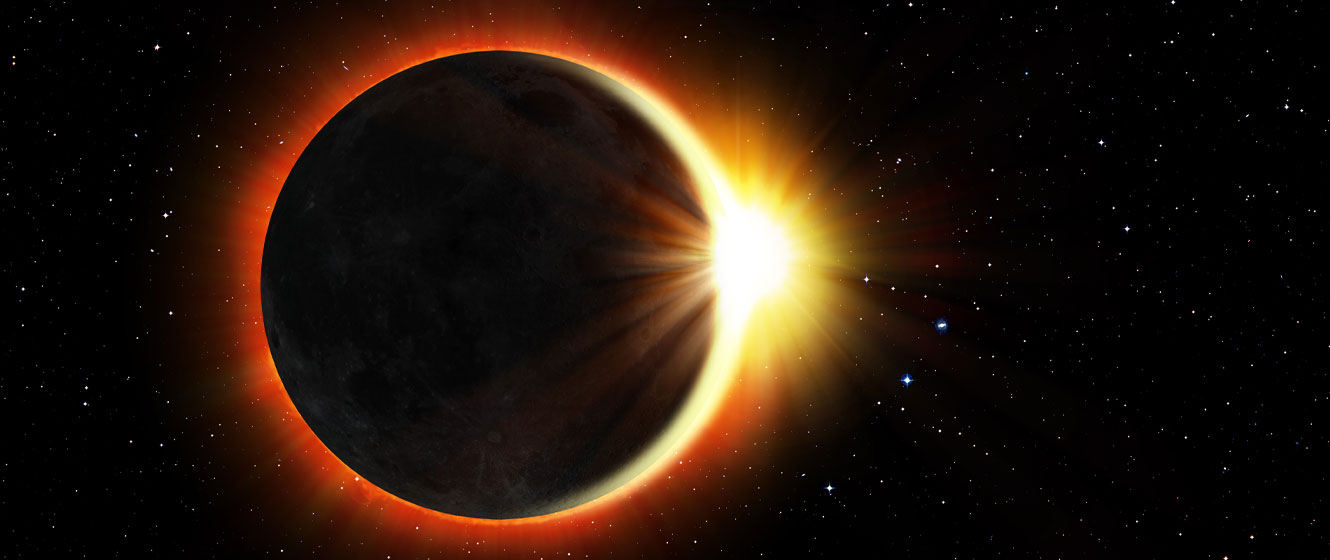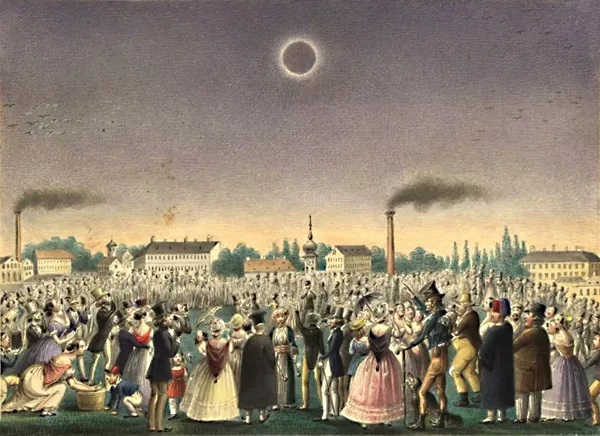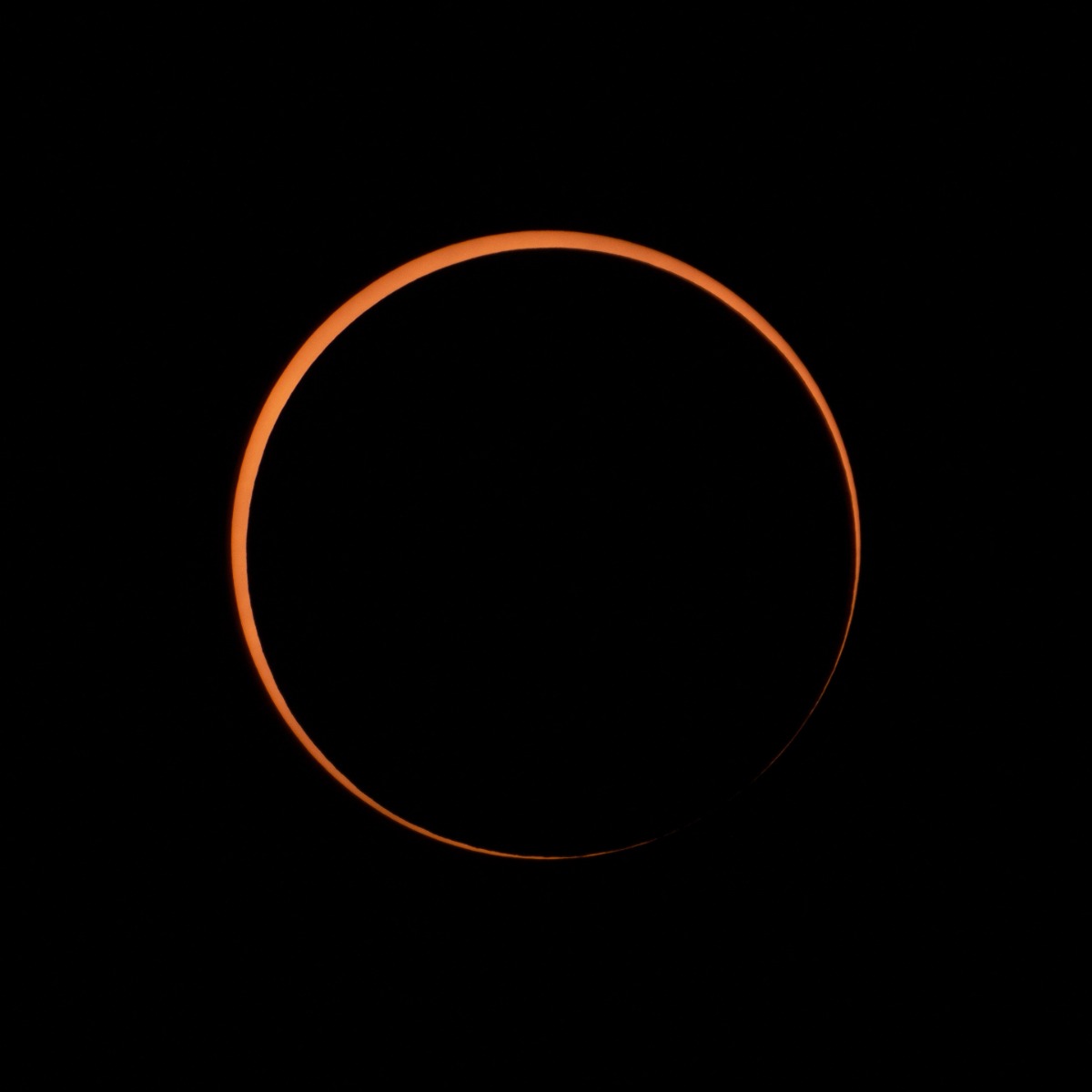
Total solar eclipses are one of the most breathtaking sights in nature, and people across the world bear witness to these celestial events with awe and wonder - but that wasn’t always the case. There was a time, many years ago, when eclipses were looked upon with fear, with many believing the sun was being devoured, and that the end of the world was nigh.
Despite the many eclipses that have occurred since the dawn of time, the Earth - and humanity - is still here and relatively intact. Is there any connection between eclipses and calamities? And is it dangerous to look at a solar eclipse?
Solar Eclipse Superstitions
Observations of total solar eclipses date back more than 5,000 years, with the earliest recorded observation thought to be in Loughcrew, Ireland. Rock carvings found there are thought to represent a solar eclipse that occurred on November 30th, 3340 BCE.
The discovery of the burned bones of approximately 48 people nearby was just as revealing, as it suggests that they may have been sacrificed in an attempt to return the Sun to the sky.
Unfortunately, this wasn’t the only time that sacrifices were made to appease whatever gods or demons were thought to have caused the eclipse. The Mayans would also perform rituals involving both human and animal sacrifice.
Other civilizations, fearful of the unfolding events and the forces driving them, would also turn to superstition to help explain them. For example, in China, the character shi depicts a dragon consuming the Sun and is the term used for both eclipse and to eat. People were encouraged to shout, bang drums and make as much noise as possible during an eclipse in an effort to scare the dragon away.
The Chinese became experts at predicting eclipses, but like so many other cultures, they considered them to be warnings and bad omens. It was the job of the Emperor’s astrologer to predict those events, and if any were to occur without prior warning, the astrologer would be liable to lose his life.

Image Credit: Johann Christian Schoeller (Artist), Sonnenfinsternis, 8. Juli 1842, 1842, Wien Museum Inv.-Nr. 65303, CC0 (https://sammlung.wienmuseum.at/en/object/418541/)
Why Were Eclipses Seen as Bad Omens?
Besides the obvious fear that resulted from seeing the Sun slowly disappearing from the sky, ancient civilizations linked solar eclipses to tumultuous events that seemed to occur soon after. In an effort to prevent these events, Chinese emperors would only eat vegetarian meals and perform rituals, while Babylonian kings would appoint a temporary replacement in the hope that disaster would befall him instead.
Some examples of historical events linked to eclipses include:
- 763 BCE - an insurrection in the city of Ashur, then located in Assyria.
- 415 BCE - the ill-fated siege of Syracuse by the Athenians.
- 532 - a rebellion against the Sasanian Empire in present-day Azerbaijan.
- 840 - the death of Louis the Pious, ruler of East Francia, and subsequent civil war.
- 1133 - the death of King Henry I in England.
- 1347 - the death of Emperor Louis IV of Bavaria.
Eclipses were also linked to natural disasters, with people believing there was the potential for earthquakes, floods, and volcanic eruptions occurring where the eclipse was seen.
However, it wasn’t all bad, with eclipses also being seen as good omens by some, and at least one example of a major war coming to an end as a result. In 585 BCE, the Lydians and Medes ended their ten-year war in modern-day Turkey when a total solar eclipse inspired the opposing sides to lay down their arms.
Even today, astrologers see eclipses as being a sign of new beginnings and the opportunity to start again with a clean slate.
Regardless of past events or what astrology might tell us today, there’s no evidence of any correlation between eclipses and any events on Earth. There are typically anywhere between two and five solar eclipses every year, with a total solar eclipse occurring roughly every 18 months.
With this in mind, we can estimate that there have been roughly 2,000 total solar eclipses over the past 3,000 years - and yet there are less than a handful of major historical events tied to any of them.
However, that’s not to say there isn’t some danger in observing the solar eclipse itself!

How Can You Safely Observe a Solar Eclipse?
Firstly, as you may already know, you should NEVER look directly at the Sun for any period of time. Doing so can cause irreparable damage to your eyes and can result in permanent blindness.
This includes looking at the Sun while it’s partially obscured by the Moon. Whether it’s a partial eclipse or the partial phase of a total or annular eclipse, the Sun’s light is still too powerful to be looked upon directly.
Fortunately, you can still safely observe the Sun - if you take the proper precautions.
How to safely observe a solar eclipse without a telescope
One fun activity for the kids is to build a simple camera obscura. This will project an image of the Sun onto a piece of paper, allowing you to safely observe the eclipse without ever looking directly at the Sun. You can find instructions on how to build one with an everyday cardboard box here.
An even simpler solution is to use eclipse glasses. When used correctly, these allow you to safely look at the Sun during the partial and total phases without risking damage to your eyes. That said, be sure your glasses are produced by a reputable manufacturer, such as Celestron. Their EclipSmart solar eclipse glasses are both ISO-certified and NASA-approved.
(Check out our Astronomy Hub article for tips on how to safely observe the Sun with solar eclipse glasses too!)
How to safely observe a solar eclipse with a telescope
You have two options if you want to observe a solar eclipse with a telescope. Firstly, while you should NEVER look at the Sun through a regular unfiltered telescope, you can purchase a solar filter that attaches to the aperture of your scope. This allows you to safely observe and image the Sun.
If you’re considering a filter, check out our handy tool to help you find the right one for your scope. Simply select your telescope from the dropdown list and it will tell you your scope’s outer diameter (OD) and recommend a filter for you. Alternatively, you can use the scope’s outer diameter to find a match with a different filter.
Looking for a dedicated solar scope? We have a selection from Lunt and Coronado that each provide outstanding views of the Sun, making them an ideal choice for observing the Sun at any time.
Eclipse or not, there are always options for safely observing the Sun - and you won’t need to risk your eyesight or fear what disaster might happen next!

Learn More
Interested in learning more about solar and lunar eclipses? Not sure where to begin? Check out our Astronomy Hub!










